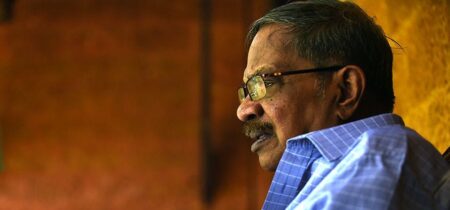Compared to many advanced countries, movie norms in India are way stricter. Filmmakers worry that the archaic nature of film censorship is curbing creative freedom.
With an annual production of 1,600 to 2,000 films, both in Hindi and other languages, India is one of the largest cinema hubs in the world. According to media reports, in 2019, Bollywood hit the Rs 4,000-crore mark in revenues, which was a milestone. Indeed, Indian cinema is growing.
But the growth in revenues, say movie industry watchers, does not mean much if it is not translated into the creative realm. And all signs point towards a bad scenario there. India’s film censor board has been under fire for irrationally curbing creative freedom. There are many instances how the members heading the CBFC panel try to inject their conservative perspective into artistic freedom.
Here are 10 reasons censorship should change its avatar to save Indian cinema.
Colonial hangover
When cinema came to India during the British rule, Indians were already familiar with art as an expression of nationalism. Poetry and songs had always been essential tools during the struggle. Fearing that cinema might create a major stir in the freedom struggle, the British came up with the Cinematograph Act of 1918. With it, the film censorship began.
Over the years, the act underwent several changes which led to the formation of The Cinematograph Act and Cinematograph Rules. CBFC functions under these acts which date back to 1952 and 1983 respectively. The way the films are censored in India witnesses the continuity of the traditionally followed norms heavily based on Victorian morals.
Read: Does India need a Censor Board?
Abuse of power
Leela Manimekalai got into a tug of war with the CBFC in 2019 for the unfair cuts in her film ‘Maadathy-An Unfairy Tale’. She termed it a form of abuse of power which suppresses artistic freedom and creative expression.
Director Prakash Jha, among many other filmmakers, has long called for doing away with the censor body for films in India. His movies ‘Aarakshan’ and ‘Lipstick Under My Burkha’ ( of which he was the producer) irked CBFC for no particular reason. He came down heavily on the board saying that authority shouldn’t be deciding what people should watch and how an authoritative mind can harm creative expression.
Jha isn’t alone. Filmmaker Onir, director of ‘Shab’, once told the media about the urgent need to revise film censorship guidelines, given how ‘illogical’ those like the Cinematography Act are in the present context. Technology has advanced and it is beyond CBFC’s ability to control. But censorship that hangs like a sword above their head limit artists and creators from exploring new boundaries of ideas and creativity.
No space for daring artists
The Justice Mukul Mudgal Committee report that came out in 2013 said that citizen’s right to engage with content is personal and is not based on collective perspective. Lipstick Under my Burkha directed by Alankrita Shrivastava was grounded by the CBFC for its “too lady-oriented content”. The body refused to grant approval to the feminist sex comedy. After a prolonged battle with CBFC, the movie was released with more than 16 cuts. Shrivastava told The Economic Times that such wrong precedence discourages women directors to grow and hinder artistic freedom.
It isn’t just gender issues that irk the censor board. Several other films like Kamal Haasan’s ‘Vishwaroopam’, Prakash Jha’s ‘Aarakshan’, Anand Patwardhan’s documentaries, Deepa Mehta’s ‘Fire’, Abhishek Chaubey’s ‘Udta Punjab’ and Sanjay Leela Bhansali’s ‘Padmavat’ among others, came under the scissor for exploring topics on politics, changing realities, dark underbellies of the society, government policies and Indian history.
Taking all these into consideration, it is important to ask if in a matured democracy, whose fundamental is not the opinion of the majority,\ but the right to dissent, whether censorship is required or not. Dissent and criticism form the core of every progressive artform including cinema and has an integral role in deciding the directions of a democracy.
The Shyam Benegal Committee formed in 2016 said that CBFC’s role should be restricted to certifying films for age-appropriate viewing. Benegal noted that it is not the job of CBFC to function as the moral custodian of the public. Ace filmmaker Adoor Gopalakrishnan, who was also a part of the committee, felt that Indian cinema should end censorship. He believed the end of censorship will help the cinema to thrive as an art form.
No more self-censorship
But clearly the government seems in no mood to end censorship and infact seems to be bringing in more laws around content regulation. Not just theatre releases, but even popular over the top (OTT) platforms such as Amazon Prime, Netflix and Hotstar which had so far been self-censoring their content, have now come under the radar of the Ministry of Information and Broadcasting. The development came after the Supreme Court sought the centre’s response on a Public Interest Litigation on the regulation of OTT platforms in October. The PIL filed by an autonomous body said that digital content came without any filtering or screening.
Censorship of films globally
The US: The United States has no federal agency that authorises permission or restriction of the exhibition of motion pictures. The rating system is overseen by an industry body called the Motion Picture Association of America (MPAA). Filmmakers make decisions based on the potential box-office earnings of films rated for general and mature audiences.
The UK: The Video Recordings Act 1984 requires video sale in the UK to be certified by an authority called the British Board of Film Classification (BBFC). The infamous ‘video nasty’ list was born here. It was created in 1982 to protect against obscenity. After BBFC, the list eventually became irrelevant.
Australia: Compared to other advanced countries, Australia is considered to be the most conservative on films ratings. The country has the Australian Classification Board (ACB) that guides the censorship of films under the Commonwealth Classification Act 1995. ACB was formerly known as the Office of Film and Literature Classification (OFLC).
Singapore: Rather than censoring films, Singapore focuses on the classification of films. The Board of Film Censors( BFC) now classifies content into age-appropriate ratings. The Film Act of 1981 stipulates importing, making, distributing or exhibiting films.
South Korea: According to the Internet Movie Database, there are no banned films in South Korea so far. The country has a Media Rating Board that gives film five different levels of rating system: G, PG-12, PG-15, R-18 and Restricted Rate. These are ruled by Presidential Decree.
France: Ministry of Culture grants visa to all films that are intended for theatrical release, only after the recommendation of Commission for film classification (Commission de classification cinematographique). The commission gives ratings for films.




